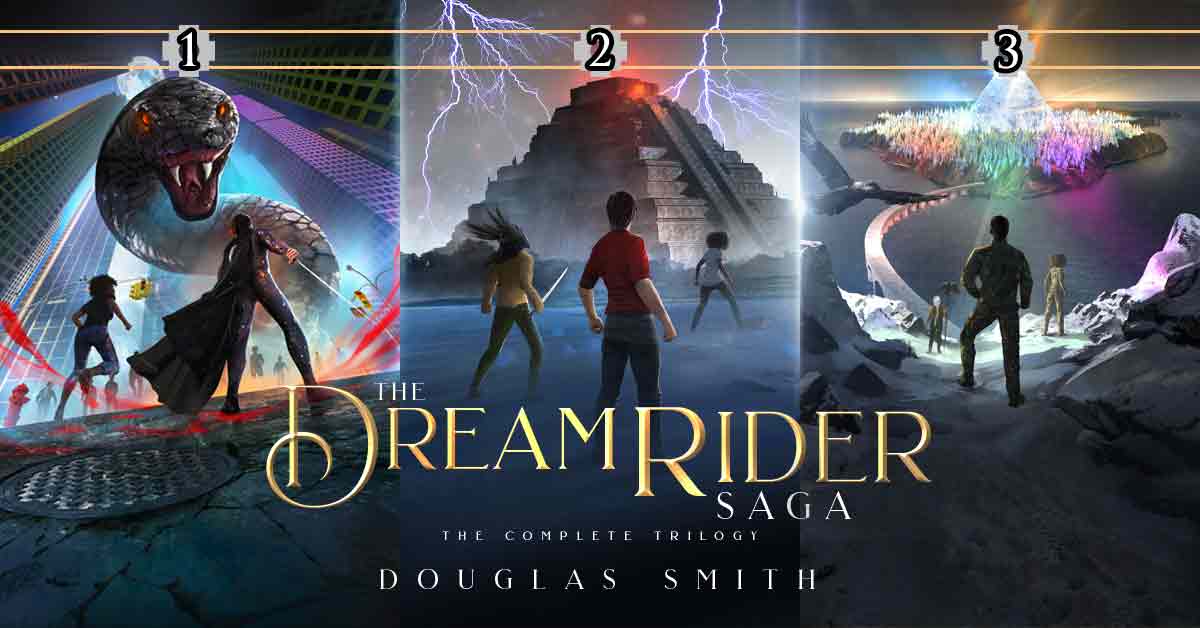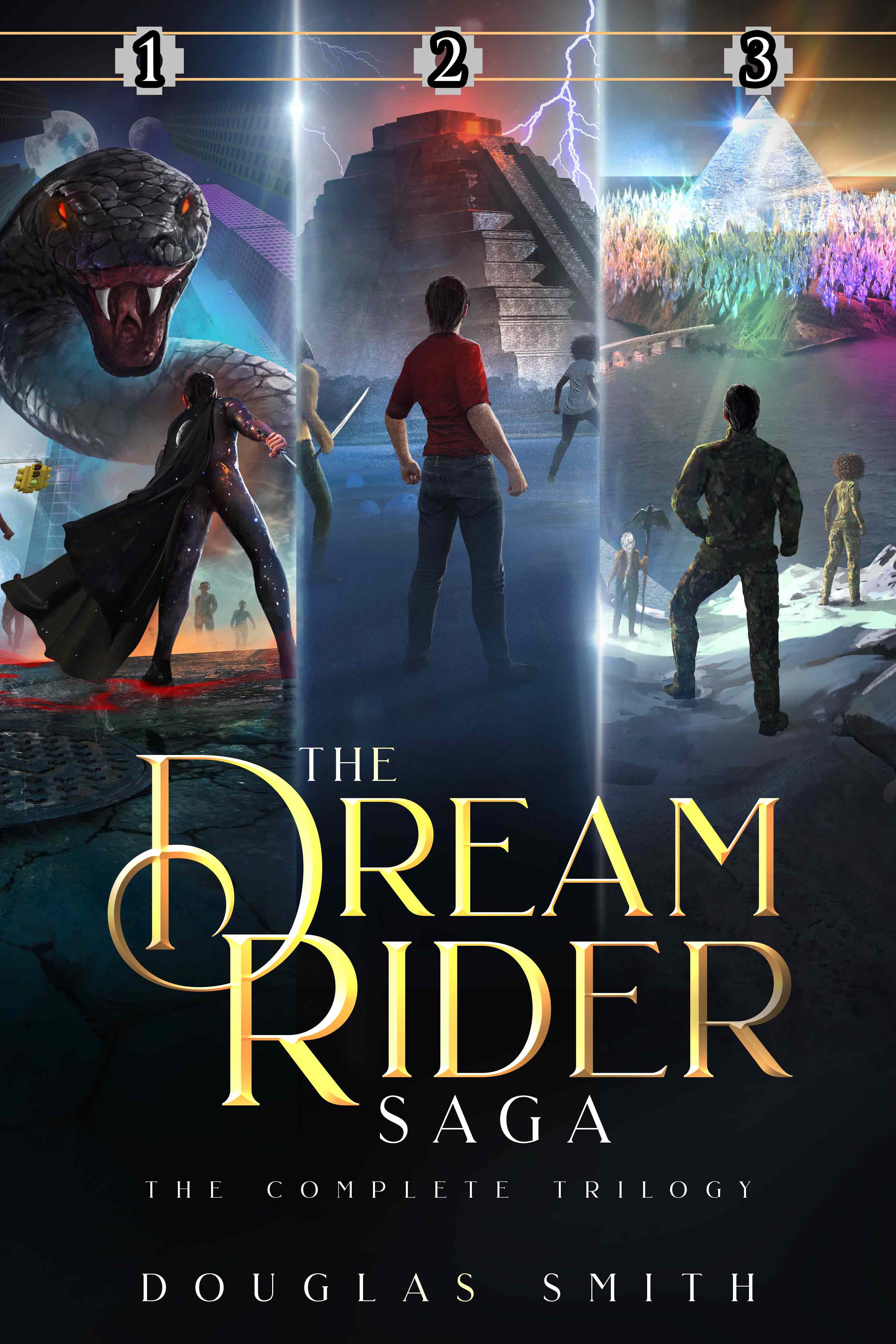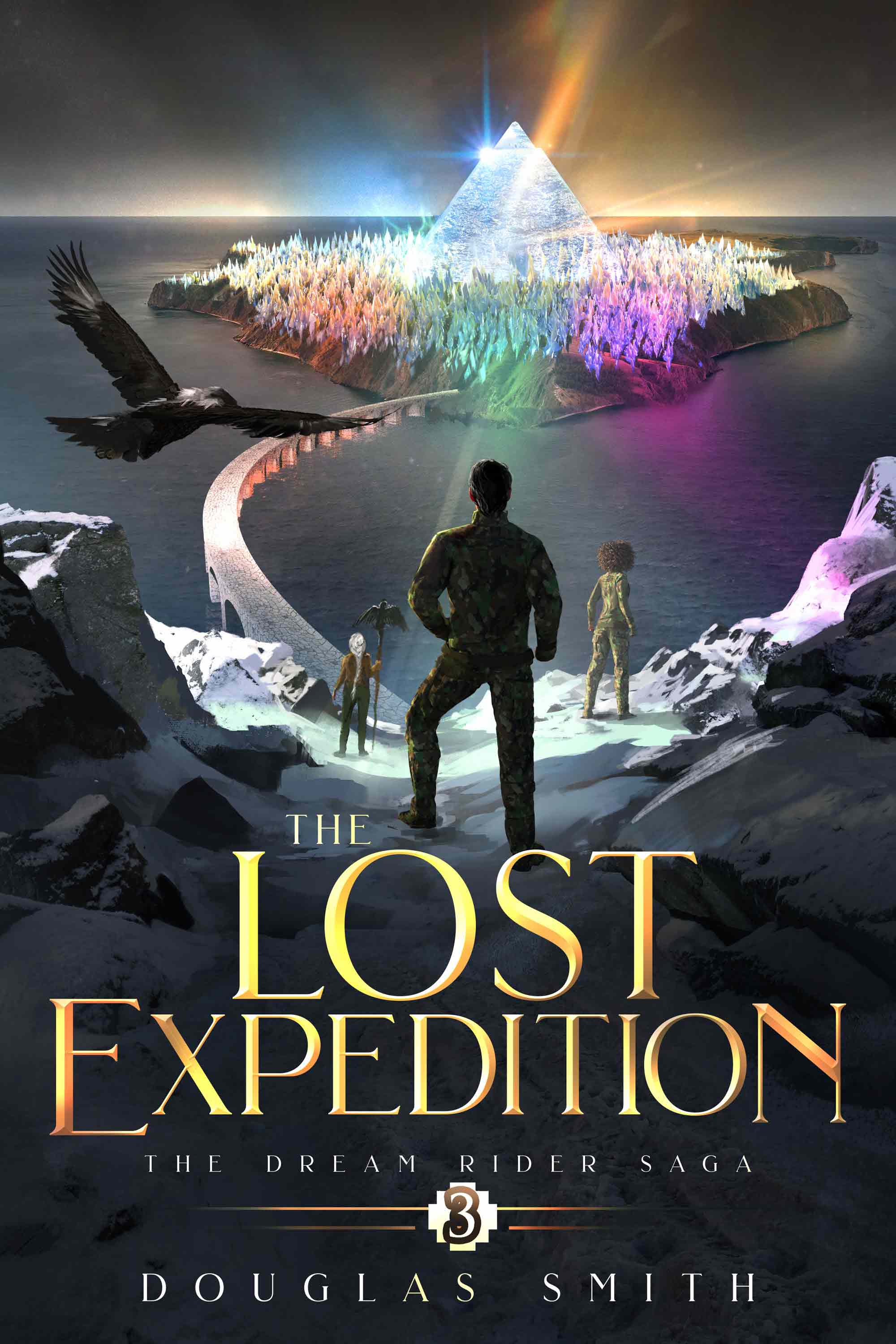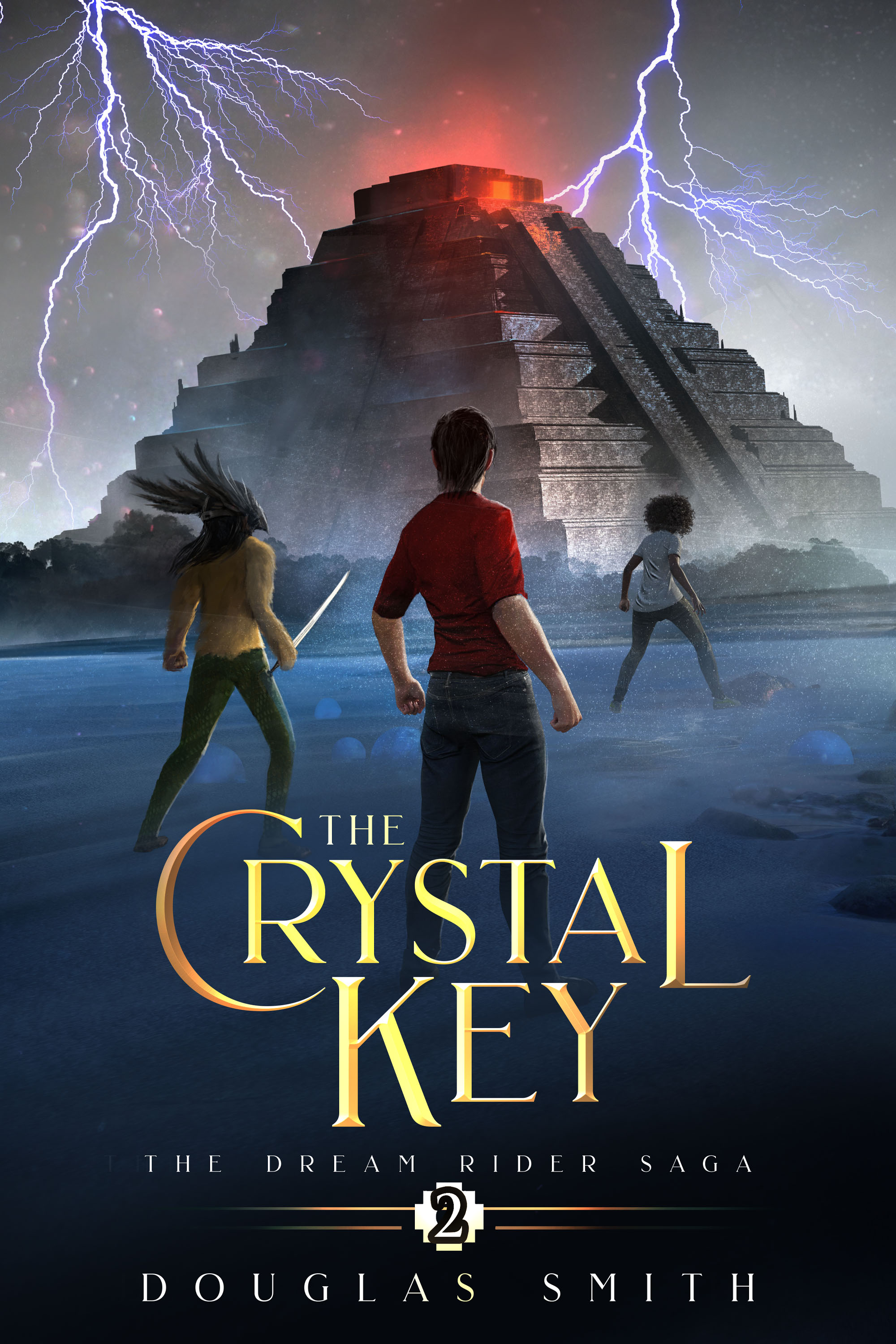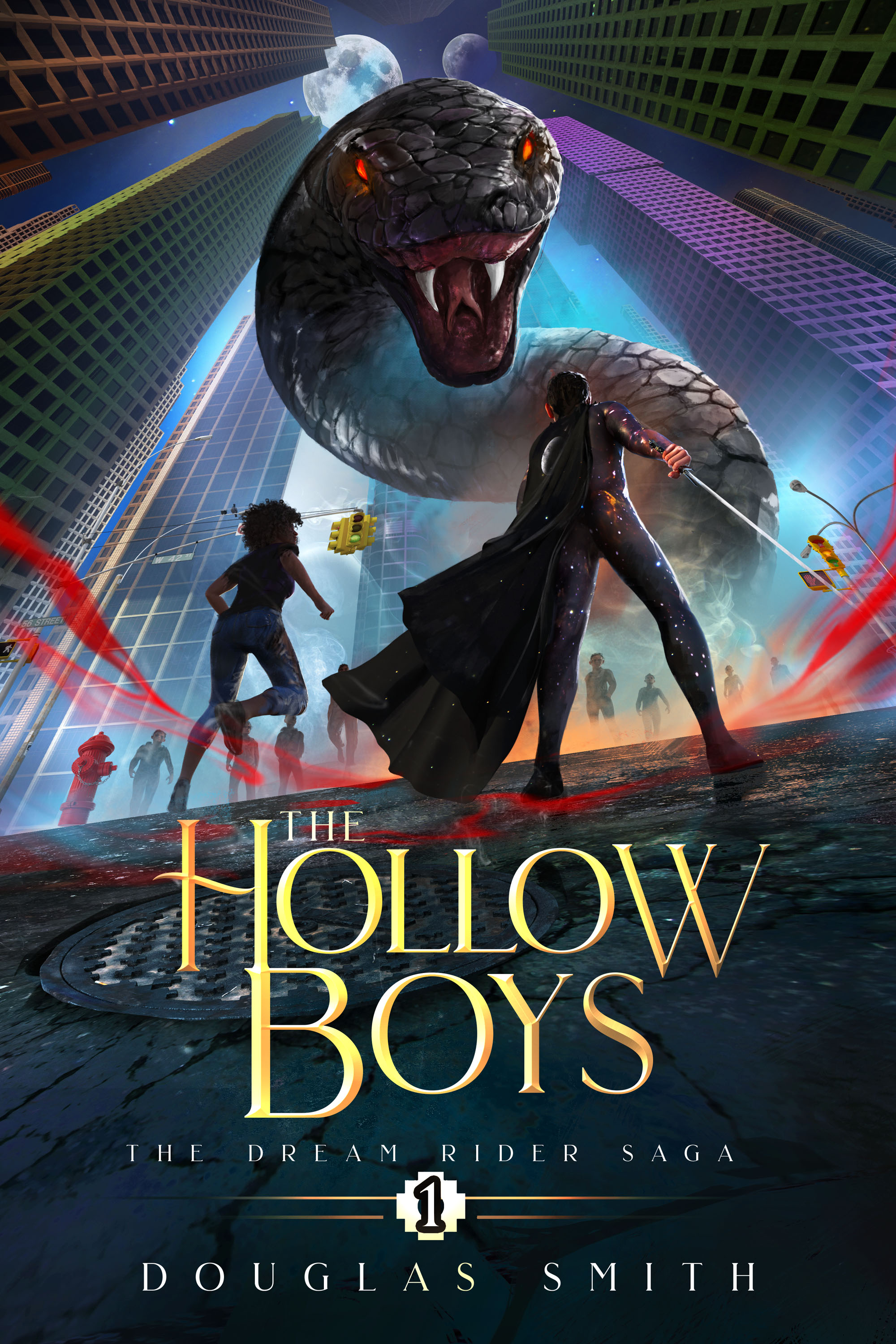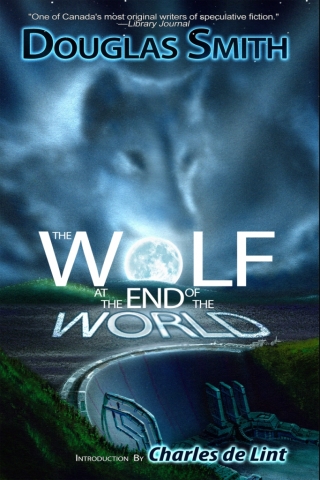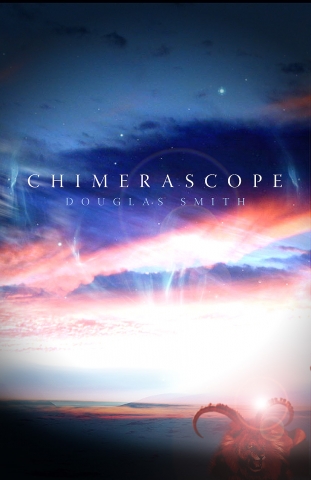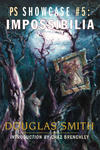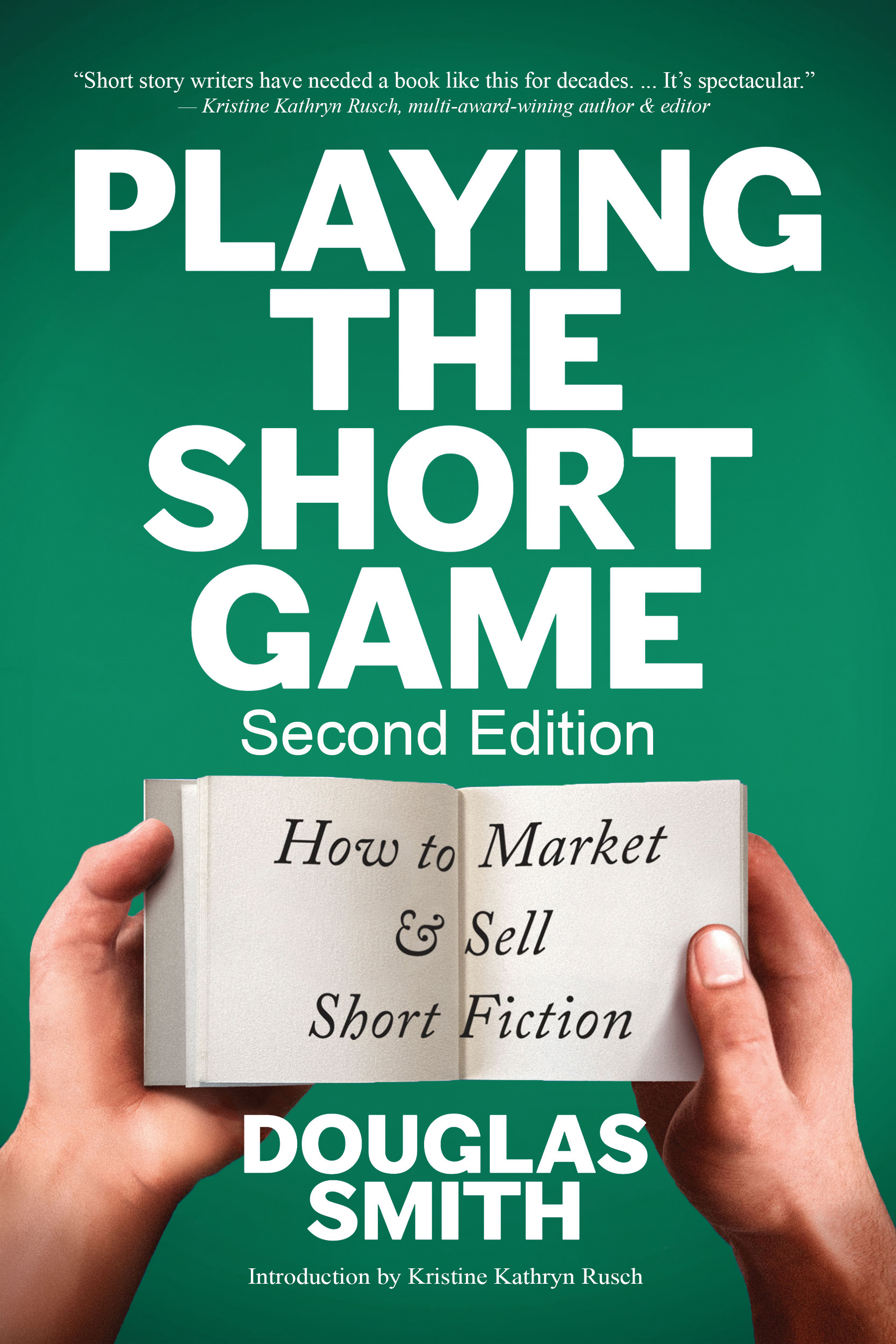"The Dancer at the Red Door" Facebook Interview
In April 2008, fellow Canadian writer, Mark Leslie Lefebvre, interviewed me on the discussion boards in the Facebook Group "Canadian Science Fiction and Fantasy" regarding my 2008 Aurora-nominated story, "The Dancer at the Red Door." I've reposted the entire interview here:
MARK: Douglas Smith is the author of "The Dancer at the Red Door", which is on the final ballot for the 2008 Aurora Award in the category of Best Short Form Work in English. The story first appeared in the DAW anthology UNDER COVER OF DARKNESS (Czerneda & Paniccia) in 2007. First of all, Doug, congratulations on the nomination. I'd like to begin by asking you these two things: "Who is Douglas Smith the writer?" and "How did you first get into writing?"
DOUG: Start with the existential stuff, eh? Who am I? A happily married father of two grown sons, living in Toronto and with a secret daytime identity of an IT exec with one of the big accounting & consulting firms. I write on the GO train, subway, planes, coffee shops, libraries, in my spare time. I've been strictly a short fiction writer to date, but am finishing up my first novel. I write a pretty broad range of stuff, all more or less "speculative," with a preference for contemporary fantasy, which is what I'd call "The Dancer at the Red Door."
I'd always wanted to be a writer, and realized in 1995 that my dream wasn't going to happen by itself. I started with short fiction because I've always loved reading the form, with a lot of my influences being short fiction masters like Bradbury and Zelazny, so I figured that I'd enjoy writing short stories. I also planned to try to build up my creds with short fiction sales and hopefully awards to make it easier if/when I would be marketing a novel.
Finally and frankly, back then I also needed to see if I could actually sell anything that I wrote, and trying my hand with short fiction seemed less daunting than starting with a novel. I sold the first story I wrote, "Spirit Dance," to Rob Sawyer and Carolyn Clink, who were editing Tesseracts6, on the last day of 1996. A good way to end and start a year. I've since sold over 100 stories (including reprints) in 28 languages and 21 countries (I think). More bio stuff, if anyone is interested, on my web site here.
MARK: Thanks for that background, Doug. I'm going to want to ask about your novel a bit later in the interview. But for now I'd like to talk a little bit about DATRD (hope it's okay that I'm abbreviating "The Dancer at the Red Door" in this fashion). This story contains some phenomenal illustrations of the "rut" of commuter working class routines. And I just have to quote from one of them here: "People shuffled by like the undead, blinking at the sun finally rising over the towers, newspapers clutched like amulets, briefcases hanging like manacles, coffee sucked from cups as if it were their life blood." That's absolutely brilliant. The way you describe this here and in other parts of the story magnificently foreshadows King's ultimate fate. Can you talk about the manner in which that idea developed when you were creating the story?
DOUG: Thanks, Mark. This story developed in layers, which a lot of mine do, it seems. Roger Zelazny once said that his story ideas tended to come to him in one of three ways: an intriguing character, an unusual idea, or a striking image--and that the best stories combined all three.
This story started for me with the image of the Dancer--the scene where she first appears in the story, spinning into view around a corner on a downtown Toronto street, and is completely ignored by everyone except the protagonist. At the time, I was working at the same corner of King and University, and wishing I could focus more on my writing than the day job, so I'm sure that's where the description of the commuter trance came from. I wrote the description of the Dancer's appearance right away, before I even knew what the story was going to be about:
"He knew she was mad the moment he saw her. She spun into view around the nearest corner, then froze for a second, au pointe as in ballet, arms raised in two graceful arcs. Then she leapt, landing to waltz through the crowd as if the sidewalk were a ballroom and each scurrying commuter her partner. And with each pirouette, madness whirled around her like dead leaves caught in a forgotten winter wind."
And there it remained in my notebook for probably a year or more. I eventually wrote an earlier and much different version of the story around the Dancer, but it just didn't work. I didn't really have the right character to encounter the Dancer, and I didn't have the right idea to drive the plot--I didn't have the right problem for the character to wrestle with.
So I shelved that story until Julie and Jana invited me to submit a story for their anthology, UNDER COVER OF DARKNESS, with its theme of secret societies. Once I had that theme, I remembered the Dancer, and the character of King showed up to audition pretty much right away. With King, the idea of a mysterious and exclusive club followed, so I had my character with a problem and the idea, like a pair of bookends around the image of the Dancer. And then it was just a matter of writing the story.
I generally jump around when I write, often writing the ending first, but I wrote "The Dancer at the Red Door" pretty much linearly from start to finish.
MARK: It's funny, I'd been planning on asking you what your inspiration for this story was and whether or not you write your stories in a linear fashion or jump around -- I think it's fascinating that you normally jump around but wrote this particular story straight from beginning to end after finding the appropriate details from that first inspirational scene of the dancer. Which leads me to ask: How many other notebook "scenes" have been part of your short fiction in this manner?
DOUG: Quite a few. I'll mention a couple. I remember taking my youngest son to the circus one summer, and we managed to get ringside seats this time. Great view of the performers--so close that I noticed something I might not have from further back. The same people who would come out in spiffy spangly uniforms and do the trapeze or high-wire acts would show up again later in coveralls pushing a broom behind the elephants and horses. That gave me an idea for a down-and-out circus of aliens, barely scraping by, moving from planet to planet. The idea went into the journal, but it was a while before I added other elements around it to make a story, and even then it took me about six attempts before that idea finally became "Scream Angel," the story that won the 2004 Aurora (I have "Scream Angel" up on my web site for the rest of April, btw, if anyone would like to read it).
One more example. I used to train in karate with my oldest son, and we were at a karate camp at Wasaga Beach one summer weekend. In a strange coincidence, I'd spent my summers as a child at the very same place where we were staying for the camp. It brought back memories of getting up early and having the entire beach to myself as a kid, sharing it only with the waves and the seagulls. That led to a single strong image, that of a strange bird and a warrior on an empty beach, an image that eventually turned into a 14th century Japan martial arts / romance story called "The Red Bird," which was an Aurora finalist in 2002.
Anyway, there're probably at least another dozen stories that started with a journal entry around a single image or sometime a single line, but which didn't turn into a story until quite some time later.
Mark: In "The Dancer at the Red Door" you touch upon all the senses quite wonderfully. Can you discuss how you use these sensual touchpoints to draw the reader into your fiction?
Doug: I've often been described as a very visual writer, which always make me chuckle because I hate writing description. In first drafts, if I need to provide the physical layout of a place or the visual description of a thing, I'll sometimes just put "[insert description here]" and then add it in a later draft. I find describing the mundane surroundings in a story to be astoundingly boring as a writer.
The funny thing is that many of my story ideas come from an initial strong visual image. But telling the reader what a typical downtown Toronto street commuter looks like bores me to death, which is probably why I tend to use metaphor and simile, such as in the passage you referenced earlier. That makes it more fun to write, and ultimately (I hope), more interesting for the reader.
Visual description of the fantastic or the bizarre is a lot more fun, like the first appearance of the Dancer in this story, or the phantom subway stop, or the black pyramid rising from the strange jungle that King finds on his quest for the Red Door. I consciously try to include other senses in my description of any scene--sounds obviously, but also smell, as it's one of our strongest memory cues. All the writer should be trying to do with a descriptive passage is to pull the reader into that scene as fully and as quickly as possible. A few cues from multiple senses works, to me anyway, better than a long passage of visual description painted in excruciating detail.
With "The Dancer at the Red Door", the key senses I tried to play on were the same ones we employ when enjoying a dance performance: visual for the movement, hearing for the music, and touch, in the way that the rhythms of the music, especially the bass beats, are felt in our bodies as much as heard. Sound and rhythm are key sensory elements of the story, since the song--*the* song--that the Dancer hears, and that King learns to hear, becomes a main character and, without giving too much away, a critical driver of the action and the climax. I worked music and sound and the song into the story throughout--the beat King feels rising up from the sidewalk, the song he hears before he first sees the Dancer, the movements of the Dancer merging with the rhythm of the subway train, the song returning to stop King's pursuit of the Dancer, the sinister gong of the phantom subway stop, etc. As the Dancer says to King, "The city has a song…," and the trick to this story was to make the reader be able to hear it too.
MARK: It's interesting that you mention this, because I could feel the pulse and beat of the city's song while reading this story. And I would imagine it's your admitted impatience with building tedious description that leads to your strength in writing descriptions that capture the reader. Can you talk a bit about how you decided to use the lyrical interludes of the "city song" between scenes in the story.
DOUG: It's another layer that I like to add to stories if it fits. I wrote an SF story called "Symphony" a few years back, which I structured into four acts, to mimic a four-movement symphony, and introduced each act with the type of instructions a composer includes in a score for each movement: Accelerando, Staccato, Largo, etc., to indicate the tone of the scene. With that story, the scenes were told out of order, so the intro also included the numbering of the movement, plus instructions like FAST FORWARD or REWIND depending on whether the scene was jumping ahead or was a flashback. The reader didn't have to pick up on that to understand or appreciate the story, but if they did, then it would add that much more to the story for them.
I had another story, "By Her Hand, She Draws You Down" (still my all-time favourite title), which starts with a four-line poem (probably the only way I'll get my poetry published), and then uses each line to introduce each of the four scenes, where the line foreshadows the coming scene, but in a way that isn't apparent until after you read the scene.
In "The Dancer at the Red Door", I wanted to do something similar, since a story about a strange dancer just seemed to call out for a strange song. I wanted the "song of the city" lines to set the tone of the story immediately, and to foreshadow the events of the story. I knew the story was going to follow the classic three-act structure, so I introduced the three scenes with lines that referenced three components of the song: For scene 1, where King meets (and loses) the Dancer, the rhythm: "The city has a song. Its rhythm, a million broken hearts..."
For scene 2, where he searches for her, the lyrics: "The city has a song. Its lyrics, whispered lies and unheeded cries, Their meaning lost in the babble, In the magnitude of the choir."
And finally, for Scene 3, in which he finds her, I used the notes of the song, specifically the key and melody: "The city has a song. Its melody-- No. There is no melody. And in a minor key. Definitely, a minor key." Basically, I'm just trying to add another layer to the story and the way the story is told.
MARK: These are some fantastic "Easter eggs" you've added into your tales. And it's interesting you should bring up "Symphony" because I wanted to mention that story and "Spirit Dance" and what seems to be a recurring theme of lyrics, dance and music in your writing. Does this mean there's not just a hidden poet inside of you but perhaps a musician?
DOUG: Well, if there's a musician inside me, he's not just hiding--he's in a witness protection program. Nope, can't play a note on any known instrument, but I make up for that by not being able to sing and having no rhythm either. I enjoy music and generally have something playing--hard rock in the car, or instrumental classical when I'm writing, usually Vivaldi or something Baroque.
But no, I'm no musician. I'd love to be, so maybe that's why I work these aspects into my stories. It's probably more that I find all creative artists interesting. I've done several stories about some form of creativity -- dance, music, sculpture. My most recent is a story about a search for undiscovered paintings by Vincent van Gogh using remote viewing. That story will be included in an upcoming short story collection (my first) called IMPOSSIBILIA, coming out from PS Publishing in the UK mid-2008.
MARK: Can you please tell us a bit more about IMPOSSIBILIA, such as where the title comes from, how it came to be and the process of putting the book together?
DOUG: Early in 2007, I was discussing the possibility of a short fiction collection with PS Publishing, a small UK press that specializes in SF, fantasy, horror and crime. Their philosophy is "to produce top quality (in terms of both the stories themselves and the production values of the actual books) collectable but affordable signed limited editions -- both fiction and non-fiction -- within the field of science fiction, fantasy and horror." They put out their first titles in 1999, and have since won six British Fantasy Awards for the Best Small Press, a Bram Stoker from the Horror Writers Association, a World Fantasy Award, and the International Horror Guild Award.
They offered me one of the first slots in a new line they are starting, PS Showcase, which will be "short, chapbook-style collections by notable emerging writers of short SF, fantasy, and horror." (So I guess I'm emerging. Not sure from where, but perhaps it's better not to know.) The collections are all 20,000-30,000 words, and mine will be at the high end of that range.
IMPOSSIBILIA will contain three novelettes, two of which are brand new, plus one reprint of an award winning story. "Bouquet of Flowers in a Vase, by van Gogh" is a science fantasy, time-travel, love story revolving around an attempt to use remote viewing to search for undiscovered paintings by Vincent van Gogh.
"Going Down to Lucky Town" (Springsteen fans may recognize the title) is a contemporary fantasy about an itinerant gambler and con man, chasing a strange pattern of extraordinary good luck across Ontario, while trying to reconcile with the daughter he'd abandoned years ago.
The third novelette will be my Aurora-winning story, "Spirit Dance," which I've always called a love story with a high body count. It involves my race of shape shifters, the Herok'a, a covert CSIS agency that hunts them, and a tragic love story, all wrapped up in environmental themes and Cree legends. My first novel which I'm finishing up now, picks up a couple of years after the end of "Spirit Dance" and involves the same protagonist, Gwyn Blaidd, a Herok'a of the wolf totem. My interest in putting out a collection was to help promote the novel when I'm marketing it to agents and publishers, so it was important to have "Spirit Dance" included.
Why IMPOSSIBILIA as the title? I wanted something short and punchy, and I hadn't been able to come up with something that encompassed what are three very different stories. It was actually suggested to me by a friend and fellow writer, Mici Gold, and I decided that I liked it. Plus all my other title ideas really sucked.
MARK: Wow, sounds great -- I've already got it on my "to buy" list -- something tells me this limited edition won't last long and I should be placing my pre-order with PS Publishing soon. Apart from multiple award wins and countless nominations, you've also had a lot of success with reprints of your fiction in foreign languages. Can you tell us a little bit about that -- perhaps what it has done for you as a writer?
DOUG: Well, it started out just as a fun thing to do. After I'd been writing for a couple of years and had a few short fiction sales, I came across a reference somewhere to a German anthology that accepted previously published stories in English and translated them for free. Plus they paid. So it was found money, and I thought it would be cool to be published in another language. They took two stories from me, and I started looking for other foreign language markets and submitting to them, mostly just to see how many languages and countries I could "collect," and it kind of grew from there.
I've now sold stories in 28 countries and 22 languages. Some of the markets pay pro rates, some pay less, and some only provide contributor copies. When I started my web site, I included the FML (foreign market list) on it. The FML is now the most popular page on my site, and draws visitors from around the world. In recent days, I've had visitors from as far away as the Ivory Coast, Russia, and Senegal. Quite frankly, I'm not sure what it's done for my writing, beyond making my name known to a lot of other short fiction writers, and I've made friends with lots of short fiction editors around the world. Maybe it will help me sell foreign rights to any novel I sell. I really don't know.
Okay, I can think of one definitely positive impact. Solaris, the fine Quebec magazine, doesn't take submissions in English. However, one of my early foreign sales was to a great little dark fantasy mag in France called Ténébres (now defunct, sadly). They printed "Spirit Dance" and sent me their translated version. I subbed the French version (albeit Parisian French not Quebecois) to Solaris, and they printed it, as "La Danse des Esprits." It went on to win the Aurora for best short story in French. If it hadn't been for the original foreign sale, that never would have happened. I've also found that the foreign language mags are more likely to include cool artwork with the stories than even the big pro English language mags.
If anyone wants to check these mags out, I have some of the illos and all of the covers for my foreign sales up on my site at http://www.smithwriter.com/publication_list. I have a mailing list associated with the FML for any interested writers. You can check out the FML at http://www.smithwriter.com/foreign_market_list.htm.
MARK: Thanks for sharing the link, Doug. I've sent several writers to it in the past few years as the best foreign language market reference I've seen on the web. When I was reading DATRD I wondered if the Society of the Red Door might have been inspired by some sort of real-life entity, or if it was symbolic in nature. I'm curious about this but also about your views on how fiction, particularly science fiction can be used to make comments on our society and history.
DOUG: My exposure to Toronto's various downtown business clubs from my non-writing corporate career certainly inspired the idea of the Society, but no one club served as the model. I mean, most of them stopped doing the sacrifices and the blood drinking thing a couple of years back, once they knew for sure that the millennium hadn't brought the end of the world. I think my Society captures some of the exclusivity and inherent snobbery of those clubs. I'm proud to say that my Society never had a gender barrier--women have been able to join the Red Door for centuries.
Regarding speculative fiction's role as a tool for social commentary, I think that SF and fantasy are at their strongest when they hold a distorting mirror up to our reality (to use an analogy by the great anthologist, Damon Knight, I believe). The best spec fic can shine that mirror on an aspect of our society and reflect it back to the reader, magnifying its evils and dangers--or at least the evils and dangers as perceived by the writer.
The key thing for the writer to remember is that they are a storyteller, not a preacher. Any time a writer gets up on a soapbox, they turn me off. To keep a reader in the story, speculative fiction needs to convey that sense of wonder at the same time, a goal which is often in conflict with trying to make a serious point. My fiction tend to be written because I thought they were cool ideas, as opposed to being driven by any society-needs-to-change agenda.
That being said, some of my stories certainly reflect my concerns with our world. "Scream Angel" (and its companion story, "Enlightenment") deals with corporate imperialism and militarism as its tool, which a reader might, if they were so inclined, map onto recent foreign policy by our neighbour to the south. You know, if you wanted to make that link. But I didn't write it with the goal of delivering a message. I just extrapolated current conditions into a distorted future, then put my characters in that situation, and made them struggle to escape it--with some cool images, inter-species sex, a mind-bending drug, and kick-ass action climax. You've still got to entertain and tell a story.
My Herok'a stories all include an environmental destruction theme, with a racism sub-text, both in terms of society's fear of the shape shifters, and what white society has done to our indigenous peoples and their cultures. One of the things I'm enjoying about writing my first Herok'a novel (almost done!!) is that I have more room to weave those themes into a longer and more complex plot.
MARK: Glad you mentioned it, because I wanted to ask (if it's okay for you to share) for more details about the Herok'a novel. What drove you to want to explore a novel length work from that "universe" and how has that experience been different than your short fiction work?
DOUG: "Spirit Dance" was the very first story that I ever wrote (and sold), and I always knew that I wanted to return to that world in novel length. Shape shifter legends have always fascinated me, probably a result of all those anthropomorphic Disney movies. And wolves have always been an interest, likely from reading too much Jack London as a kid.
The Herok'a are my own race of shape shifters, each tied to a particular animal species, or class of species, such as canids, felines, rodents, birds, etc. These stories let me explore issues that are important to me, such as the destruction of animal habitat by the exploitation of our natural resources. The Herok'a derive their vitality from the strength of their totem species, so when their totem animals are threatened, the Herok'a themselves are threatened. The novel has given me a chance to explore these issues to a depth not possible in a short story.
Writing "Spirit Dreams" (working title) has been an interesting experience, compared to short fiction. I knew how I was starting the novel--a gruesome killing that seems to imply a Herok'a involvement. And I knew the general plot line, including how and where it would all end. Plus I knew most of the main characters. But compared to a short story, a novel is, uh, longer. And, um, bigger. More characters with longer arcs. More plot lines and complications for characters, resulting in more possible character decisions and plot turns. The net effect was that I needed to do a scene outline, plus full character outlines with their history, motivation, and arcs. When I write a short story, I can generally keep all this in my head. But with the novel, especially my first, that wasn't going to work for me. I have multiple character arcs, and I firmly believe that "character drives plot." I really needed to understand my characters, their motivation in the story and how they would meet each other and how those interactions would drive character problems and decisions, which drives plot. Plus it's a murder mystery so I had to plot out what discoveries would happen when.
I also found that I needed to write scenes more sequentially than I usually do for a short story, where I often write the final scene first. In the novel, I could still jump around to some extent in an act, but I had to pretty well finish the act before writing scenes in the next act, because I found that as I wrote the scenes, I'd get better plot ideas than I'd originally put in the outline. That meant if I jumped too far ahead to write a scene, I'd likely end up having to throw it out.
Another discovery was how important theme was. The novel's theme is one of hunger and emptiness--the hunger of our modern society for natural resources--water, trees, minerals, land--and the emptiness that leaves behind, for the people and the creatures who were here before us--the native people and the animals. Knowing this up front let me use the theme to drive the choice of symbolism that acts as a linking element throughout a longer work like a novel.
Then there was the amount of research required, but I think I picked too ambitious a book to start with. I tell parts of the story via traditional Cree and Ojibwa stories and legends, and I spent a lot of time researching these aspects of the book, but I am very concerned that I am portraying this culture with accuracy and respect. On top of that, I needed to research hydroelectric dam operations, history of impact of white society and religious structures on native culture (such as residential schools), the impact of hydro projects on hunting territories and traditional way of life, and lots of physical site research, which involved time in a "typical" Ontario northern town to research First Nations reserves, flora, fauna, characteristics of the bush. Not to mention DNA research, reproductive rules of the Herok'a (what happens if they mate with a human), police procedures in a small Ontario town and on a First Nations reserve. I'm happy with the result, so maybe it's just as well, because if I'd known how much I'd bitten off, I might have started with something less ambitious.
MARK: Well I'm certainly looking forward to seeing the result of all the research and effort you're putting into this novel. Now one last question. As I understand it, there's a short independent film that was recently shot and due out this spring or early summer which was based upon your short story "By Her Hand She Draws You Down" (another art-themed story I might add) - can you tell us a little more about how that came to be?
DOUG: Sure. It's just an indie film, but it's kind of exciting. In 2002, Stephen Jones selected my supernatural horror story “By Her Hand, She Draws You Down” for the thirteenth edition of his award winning annual horror anthology, The Mammoth Book of Best New Horror. The Review Journal of the American Library Association described “By Her Hand…” as “delightfully creepy” and “about a young woman who is driven by a mysterious hunger to sketch people and steal their life force as her horrified lover looks on.” You can read more reviews on my web site.
Shortly after, director Anthony Sumner of TinyCore Pictures approached me. TinyCore does work in commercials, promotional videos, music videos, and documentaries, with a client list that includes JP Morgan Bank, Jesse Jackson, and Hootie and the Blowfish. However, they also do short independent horror films, and Anthony was interested in shooting a film based on "By Her Hand..." to show at indie film festivals.
I agreed, and Anthony added the project to his production schedule. Alan Rowe Kelly joined the project as co-Executive Producer. Anthony cast Zoe Chlanda and Jerry Murdock in the lead roles of the artist Cath and her boyfriend Joe. Drew Willis, art director for Time Life Children's Books and an award winning SF illustrator, was commissioned to do the sketches that are such a key part of the story.
They filmed on location around Ocean Grove and Asbury Park, New Jersey, during which Fangoria magazine came to the set for an interview. Anthony has shared the storyboard script with me, and they've stayed incredibly faithful to the story, including the original dialog. I've posted the storyboard script on my web site. Shooting finished in November, and they are currently working on the edit and score, and then will do the sound mix and DVD finishing for the festivals. That should be finished in about a month, at which point I'll have first viewing and approval of the final piece.
Then they'll be submitting it to indie film festivals, hoping to garner some awards. There are also plans for including it in an anthology of three movies, all starring Jerry Murdock, and distributing the antho on DVD through major retailers. Hope that works out--it would be cool to be able to walk into a store and buy a DVD movie based on one of my stories. I’m looking forward to seeing the final result.
MARK: So am I, Doug. "By Her Hand, She Draws You Down" is one of my favourite of your stories. Well, that concludes this interview with Aurora nominee Douglas Smith. Doug, I'd like to thank you for taking to time to "sit down" in this virtual setting with me and answer my questions about your writing.
DOUG: And thank you, Mark, for your time and an interesting set of questions. It's been fun.
